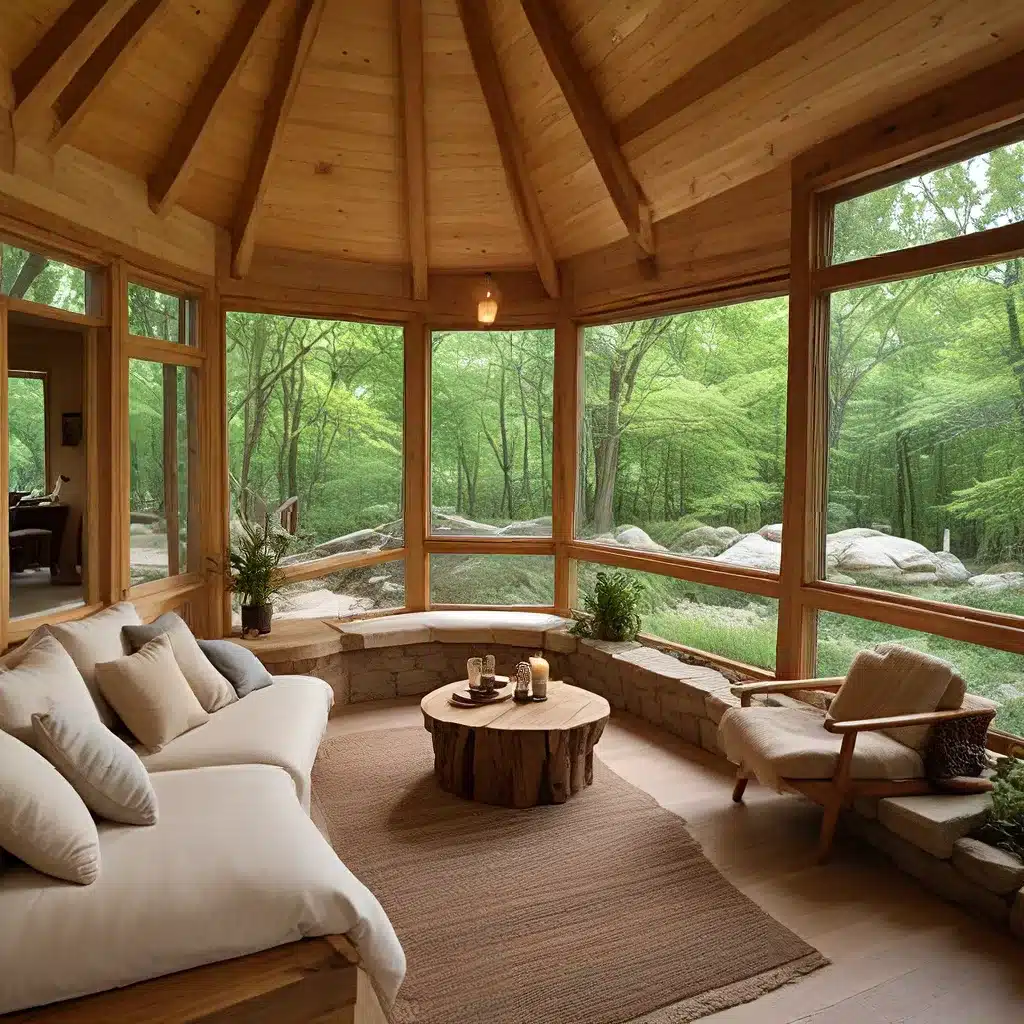
In a world that often feels fast-paced and overwhelming, the need for serene, harmonious spaces has never been more essential. As homeowners and design enthusiasts seek to create personal sanctuaries, the art of crafting peaceful retreats has emerged as a key focus in the realm of interior design. By thoughtfully blending functionality, aesthetics, and a connection to nature, designers are empowering individuals to cultivate havens of tranquility within their own living spaces.
Embracing Biophilic Design
At the heart of this movement lies the concept of biophilic design, which emphasizes the integration of natural elements into the built environment. This approach recognizes the profound impact that our surroundings can have on our mental and physical well-being. By incorporating organic materials, ample natural light, and verdant foliage, designers can foster a sense of harmony and wholeness that resonates with the human psyche.
One shining example of biophilic design can be found in the stunning Luang Prabang, a city in Laos that has captured the hearts of many. This urban oasis, nestled along the banks of the mighty Mekong River, seamlessly blends the urban and the natural, creating a tranquil hideaway that exudes a wonderfully relaxed pace of life. The city’s vibrant markets, lined with local artisans showcasing their handcrafted wares, offer a sensory experience that celebrates the region’s rich cultural heritage.
Designing for Wellbeing
Beyond the incorporation of natural elements, wellness-focused interior design has also gained significant traction. By prioritizing the emotional and psychological needs of occupants, designers are crafting spaces that foster relaxation, mindfulness, and restorative experiences. This holistic approach to design recognizes that our living environments play a crucial role in shaping our overall well-being.
One such haven is the Mekong Estate, a collection of villas situated along the Mekong River in Luang Prabang. This stately retreat, with its French and Laotian-inspired design, offers guests the opportunity to soak up the sun, read, and enjoy a refreshing gin and tonic while taking in the panoramic views of the river and the surrounding mountains. The attention to detail, from the cozy blankets and outdoor breakfast service to the small stove of coals to keep guests warm, exemplifies the commitment to creating a truly rejuvenating experience.
Embracing Cultural Influences
As designers seek to craft harmonious retreats, the influence of diverse cultures and traditions has become increasingly important. By drawing inspiration from global design aesthetics and incorporating local materials and craftsmanship, they are able to create spaces that are not only visually stunning but also authentically connected to their surrounding environments.
The Tamarind restaurant in Luang Prabang, for instance, seamlessly blends East and West, offering diners a delightful mix of sights, sounds, and tastes. The restaurant’s tapas-style dishes featuring Laotian ingredients with a Western twist, paired with its picturesque location along the Mekong River, create an immersive experience that celebrates the city’s unique cultural heritage.
Optimizing Spatial Planning
Alongside the pursuit of aesthetic harmony and emotional well-being, the art of space planning has become integral to the creation of peaceful retreats. By thoughtfully arranging furnishings, defining distinct zones, and maximizing natural light, designers can cultivate a sense of flow and balance within a living space.
One such example can be found in the Elohee retreat center in northeastern Georgia, where the owners have dedicated themselves to preserving the land and creating a special guest experience. While the center’s use of the term “Elohee,” derived from the Cherokee word for “earth,” has sparked some discussion around cultural appropriation, the team’s willingness to engage in open dialogue and consider feedback demonstrates a commitment to continuous improvement and a collaborative approach to creating ethical retreats.
Embracing Sustainability and Accessibility
As the demand for harmonious living spaces continues to grow, the importance of sustainable and accessible design has become increasingly paramount. Designers are now embracing eco-friendly materials, energy-efficient technologies, and holistic approaches to minimize the environmental impact of their creations.
The Monte Velho retreat in Portugal, for example, boasts impressive sustainability and reforestation efforts, offering guests spacious single rooms with private baths and outstanding cuisine. However, the venue’s increasing prices and limited regional transportation can pose accessibility challenges, underscoring the need for a balanced approach that considers both ethical standards and practical considerations.
Cultivating a Sense of Belonging
Ultimately, the art of crafting peaceful retreats extends beyond the physical space, encompassing the creation of inclusive and supportive environments that cater to the diverse needs of individuals. By fostering a sense of belonging and uplifting the unique strengths of each person, designers can empower their clients to find solace and rejuvenation within their own homes.
As Urban Grace Interiors continues to push the boundaries of interior design, we remain committed to this holistic approach, blending functionality, aesthetics, and a deep respect for the human experience. By collaborating with our clients and embracing the richness of global influences, we are proud to play a role in creating harmonious hideaways that offer a respite from the demands of the modern world.

